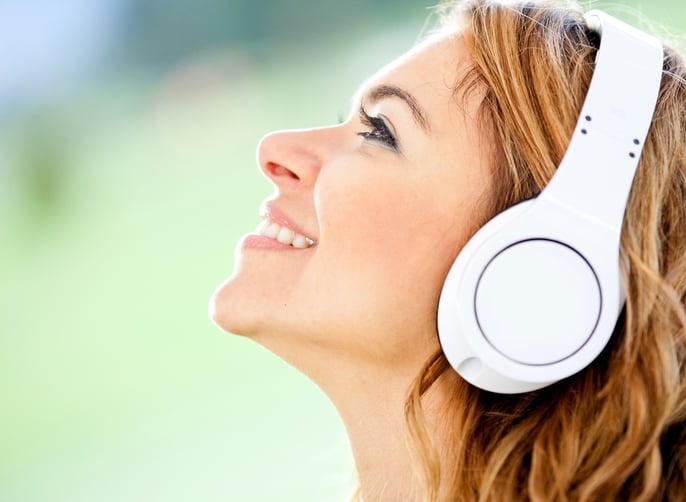
Sensitivity to sound is a common migraine trigger, particularly in the prodrome phase, but patients often don’t realize the extent of its effect on their headaches. In a March 2015 report published in Neurology, researchers discovered a connection between migraine patients and people with heightened awareness to sound, which suggests that suppressing certain sounds during a migraine can help to avoid making it worse.
The Effect of Sound on Migraine Attacks
Studies show 77 percent of sufferers in the 18 to 38 age group are sensitive to sound, while the rate drops to 67 percent in patients 60 years and older. This could be due to reduced hearing ability, but that hasn’t been proven as yet. Some patients believe sound doesn’t affect them, but when asked if they would rather be in a quiet room or in a venue with loud music, 95.5 percent chose the quiet venue. So even if you don’t think sound impacts your migraine, you could be surprised to find reducing your exposure to noise helps diminish the duration or intensity of the pain.
Using Noise-Canceling Headphones for Migraine Relief
This is just one way you can protect your senses from sound, both before and during a migraine attack. Let’s take a look at the science of headphones, and determine how they work for migraine sufferers.
Headphones can help protect you from unwanted sound in various ways:
- Active noise cancelation, which uses specialized equipment to detect and analyze the external sound, and replace it with a signal that counters it.
- Noise isolation, which is essentially passive noise cancelation. This works by blocking out most external noise using well-fitting earcups, to create a strong seal around the ears.
Both types of headphones are available in wired or wireless versions, and the latest battery-operated models hold enough charge to make them viable. You may need to decide between standard and noise-canceling headphones, however, because some good brands can’t do both. Here are some of the headphones on the market and their price ranges.
Active noise-canceling headphones and earbuds:
- Top of our hit parade is the Bose QuietComfort 35, which retails between $320 and $350 depending where you buy it. Yes, it’s expensive, but it has the best active noise-cancelation capabitilities on the market and still produces fairly good sound. You can use it with or without a power connection, which gives you the flexibility you need to take it wherever you go in case a migraine comes on.
- If you want something a little more affordable but almost as good, the Plantronics BackBeat PRO 2 might be the solution. At around $200, the product combines good noise cancelation with good sound delivery and a comfy fit, all with the advantage of the same wired vs. wireless flexibility.
- For migraineurs who experience discomfort from wearing headphones that outweighs the benefits of silence, the Bose QuietComfort 20 earphones offer very good noise cancelation in a lightweight, portable model that sells for around $300. A more affordable version of these is the Phiaton BT 220 NC earphones, which provides reasonably good noise cancelation and sound for a cost of under $190.
Passive sound-isolating headphones and earbuds:
Most reasonably good quality, sound-isolating equipment can reduce noise by about 30 decibels, as long as they fit well. That doesn’t mean you won’t hear anything at all, but it will dampen the external sounds and that could be all you need to avoid triggering (or intensifying) a migraine attack.
As an example, a car running 30 feet away from you will deliver between 60 and 80 decibels of noise, so by putting on the headphones you can reduce that by 50 percent.
- The Beyerdynamic DT 770 M (80 Ohm) over-ear headphones isolate up to 35 decibels and have big, soft earpads you can wear for hours. Priced between $120 and $200 depending on which Ohm model you choose, these are excellent value for money. You can read the reviews of other models here for more in-depth insights.
- For the migraineur on a budget, noise-isolating earbuds are the cheapest option available to help reduce your sound sensitivity. The critical factor when you’re choosing noise-isolating earbuds, especially in the under-$100 price range, is to find devices that are comfortable when fitted tightly in your ears. Since in-ear buds seal the entry to the ear better, they can have superior noise-blocking qualities as long as they fit well. Check out the reviews of several low-cost earbuds here, if you think this is an option for you.
Most migraine sufferers will do anything to help reduce their attacks, and limiting your exposure to noise is an option worth trying. There are costs involved that likely aren’t covered by insurance, but for frequent sufferers who know they are sensitive to sound, it might be worth the investment.


